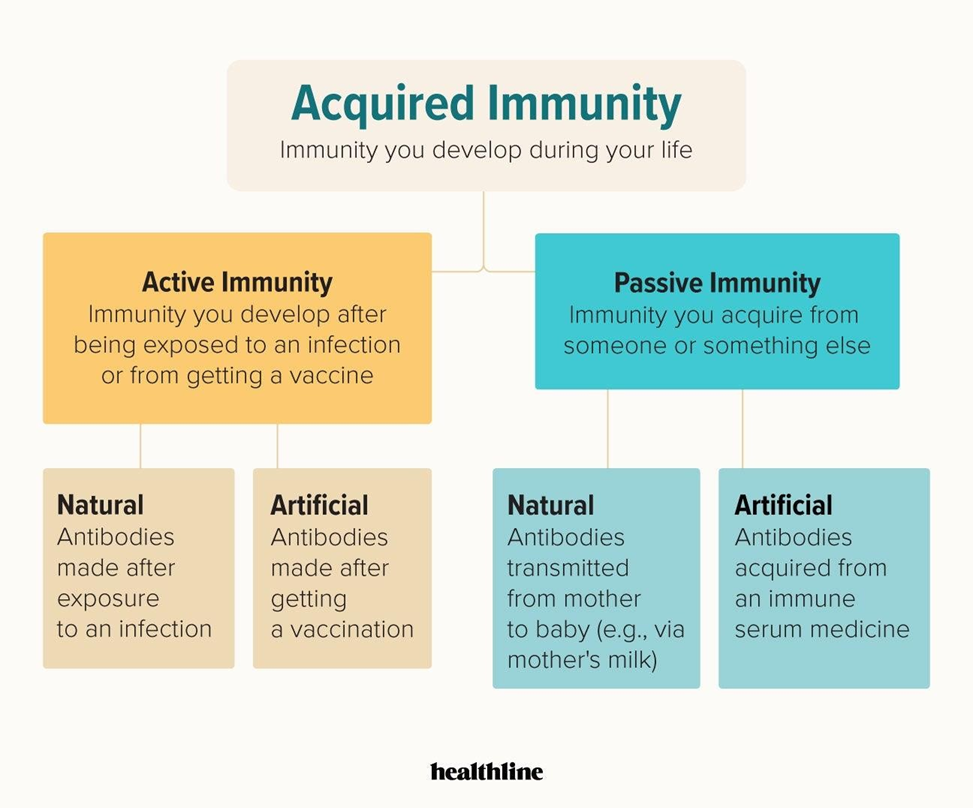A baby is born temporarily immune to the diseases to which the mother is immune. The nurse would explain this to the mother as being which of the following types of immunity?
Naturally acquired active immunity
Artificially acquired passive immunity
Naturally acquired passive immunity
Artificially acquired active immunity
The Correct Answer is C
A. Naturally acquired active immunity refers to immunity acquired through natural exposure to a pathogen or antigen, leading to the production of antibodies by the individual's immune system.
B. Artificially acquired passive immunity refers to the transfer of antibodies produced by another individual or animal, such as through administration of immune globulin.
C. Naturally acquired passive immunity occurs when antibodies are transferred from mother to baby through the placenta or breast milk, providing temporary protection to the baby.
D. Artificially acquired active immunity refers to immunity acquired through vaccination, where the individual's immune system is stimulated to produce antibodies in response to an antigen.

Nursing Test Bank
Naxlex Comprehensive Predictor Exams
Related Questions
Correct Answer is B
Explanation
A. HEPA filtration is not typically required for clients on droplet precautions.
B. Droplet precautions require healthcare workers to wear a mask when providing care to prevent the transmission of respiratory droplets.
C. Gowns are not typically required for clients on droplet precautions unless there is potential for contact with body fluids.
D. Negative airflow is not specifically indicated for clients on droplet precautions; it is more commonly associated with airborne precautions.
Correct Answer is C
Explanation
A. While monitoring urine characteristics is important for overall assessment, it may not be the priority in this situation.
B. Homan's sign is used to assess for deep vein thrombosis and may not be directly related to the client's current symptoms.
C. Elevated temperature after knee replacement surgery could indicate a potential infection, including pneumonia, so assessing lung sounds for signs of infection is a priority.
D. Diarrhea may be indicative of gastrointestinal issues but is less likely to be directly related to the client's current symptoms after knee replacement surgery.
Whether you are a student looking to ace your exams or a practicing nurse seeking to enhance your expertise , our nursing education contents will empower you with the confidence and competence to make a difference in the lives of patients and become a respected leader in the healthcare field.
Visit Naxlex, invest in your future and unlock endless possibilities with our unparalleled nursing education contents today
Report Wrong Answer on the Current Question
Do you disagree with the answer? If yes, what is your expected answer? Explain.
Kindly be descriptive with the issue you are facing.
